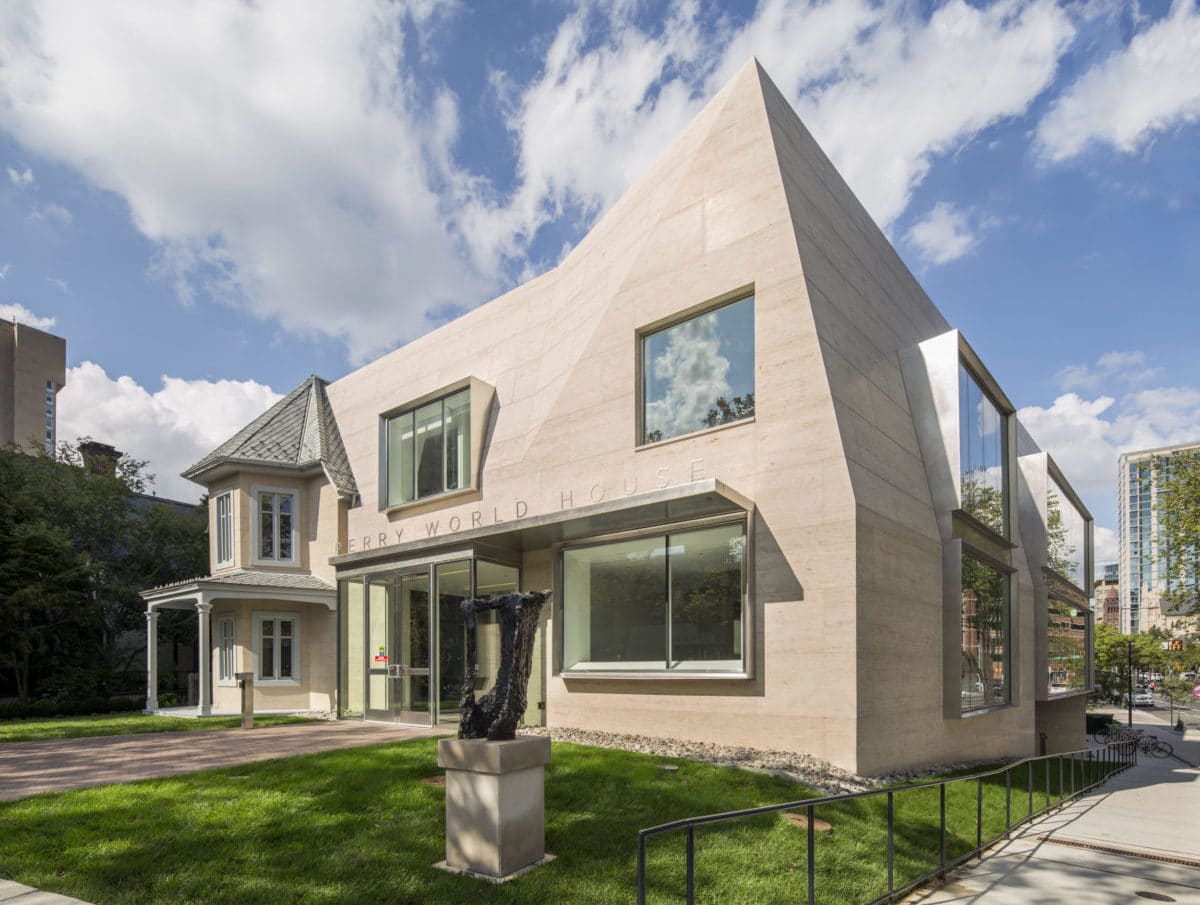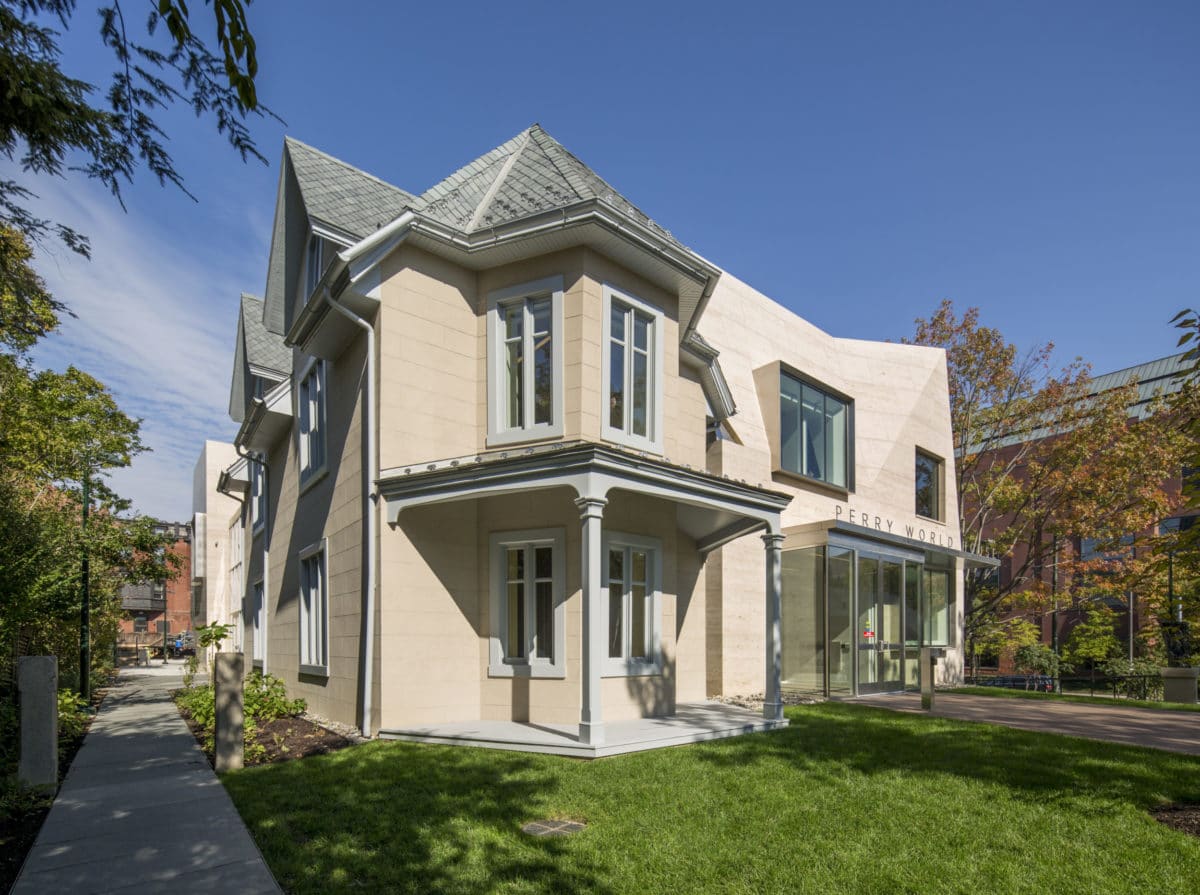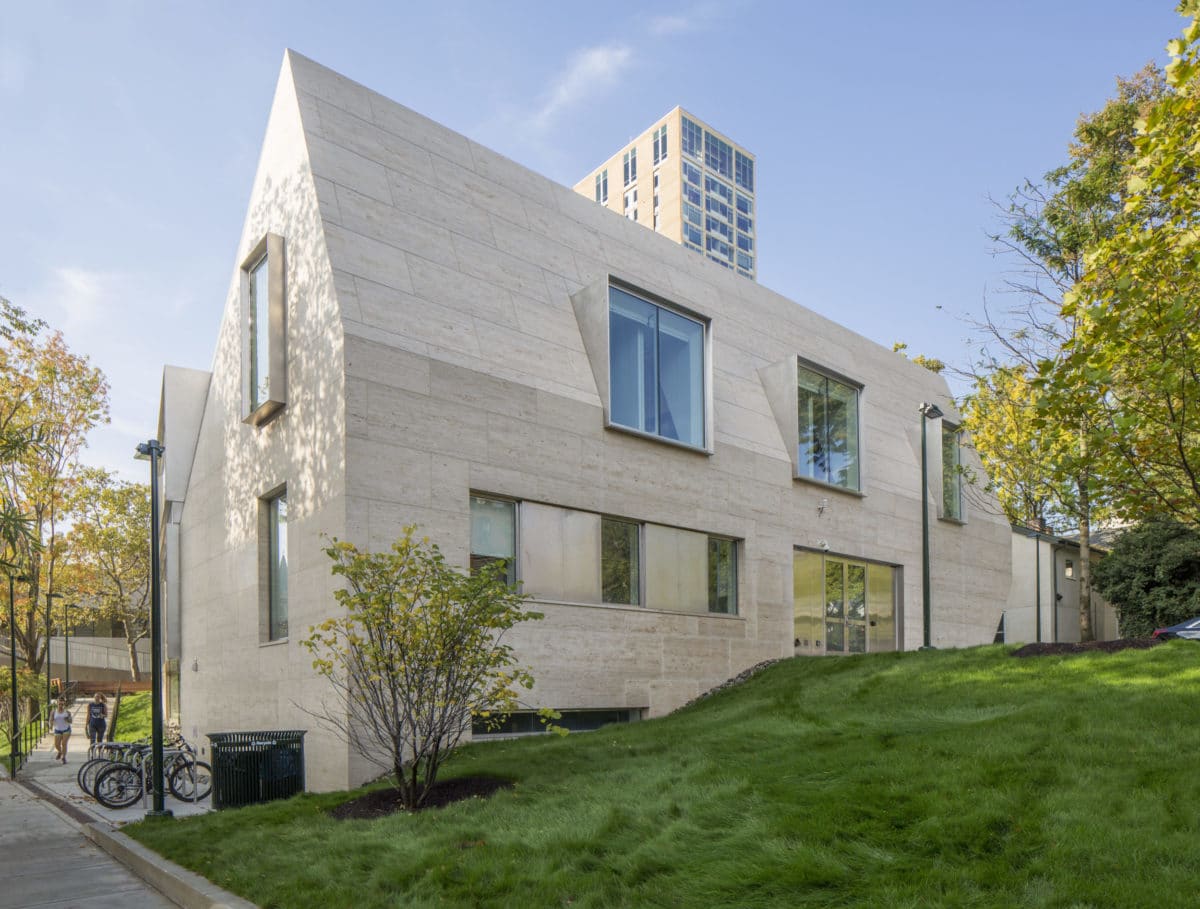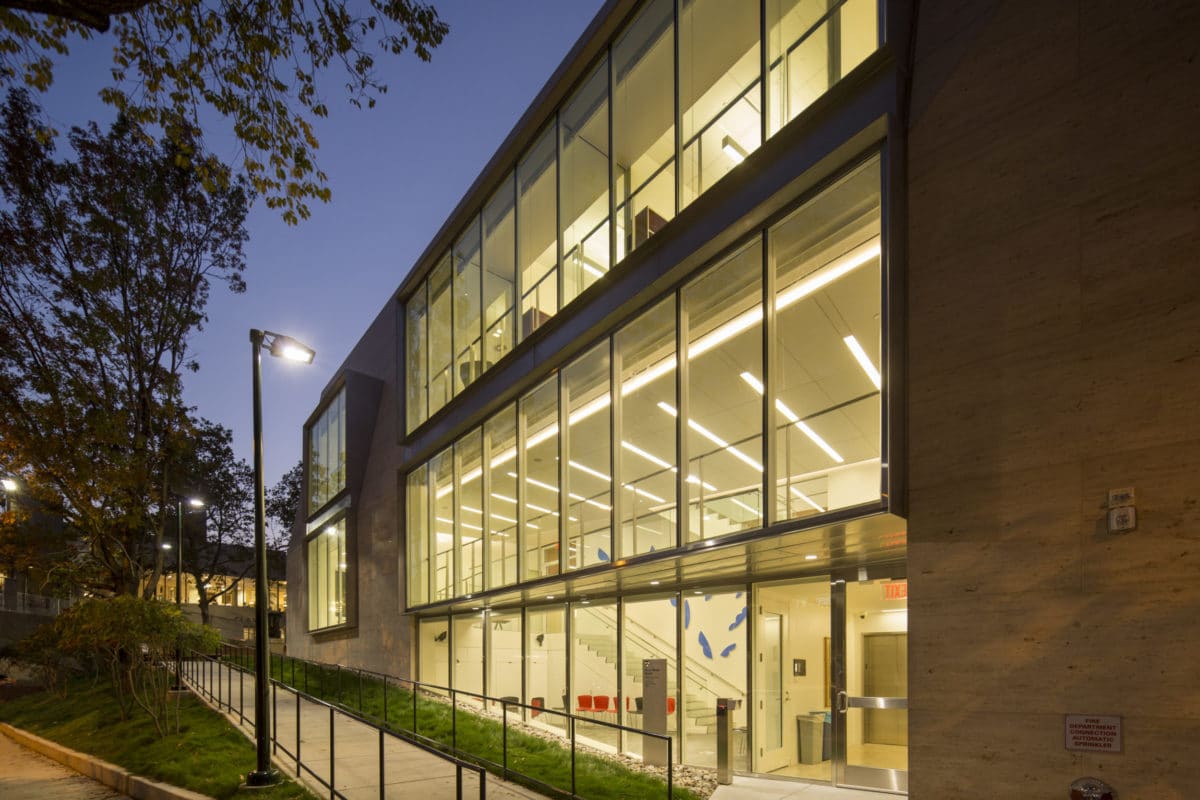
[Photo: Greg Benson]
Take a look at the Perry World House at the University of Pennsylvania and you’ll see a familiar facade nestled into one corner of the building’s hulking frame. It’s a charming little cottage, originally all of 900 square feet. The Gothic Revival house was built in 1851 using a template created by architect Samuel Sloan, then became home to a merchant from Philadelphia and, later, a campus fraternity. By 2014 the cottage was the oldest surviving building on Penn’s campus, but it was also a bit of an eyesore. The university was looking for a home for its new, multidisciplinary institute for global policy. Perhaps the obvious thing to do was knock down the rickety old house and build something new in its place. That’s not what happened.
Instead, the university hired the New York and Frankfurt–based firm 1100 Architect to imagine a new building without entirely scratching out the old one. Their approach, so unique it stretches the boundaries of what we call adaptive reuse, was to preserve a portion of the original house while merging it with a much larger structure. “Our new building holds the most significant portion of the house in an embrace,” says David Piscuskas, founding principal at 1100 Architect.
The finished 17,400-square-foot building is 20 times larger than the original, but it’s defined by the facade of the 160-year-old cottage. The house’s front bay was seamlessly merged with a new limestone building, and its Gothic Revival style inspired the design—though it’s been stripped down and abstracted for the 21st century. “We never set out to make a period piece,” Piscuskas says. “We were historically accurate, but it’s not 1850. We didn’t include every carved piece of molding that would have been there back then. The cottage is a contributing building that inspired a new building.”

An old cottage gets quite the addition at the University of Pennsylvania. [Photo: Greg Benson]

[Photo: Greg Benson]
Piscuskas says the constraints of working with the cottage heightened the team’s creativity, inspiring design decisions that would never have come about if they’d been building from scratch. For instance: dormers.
The team played with the idea of dormers—those windows that project from a roof—in keeping with the spirit of a 19th-century home. They used the cottage’s original dormers to bring light and visual interest to the interior, and opted to add more to the building’s sloping roof, which was itself inspired by the cottage’s silhouette. These new dormers are much larger than the originals, so big a person can stand inside them and “place themselves at the edge of the viewscape,” Piscuskas says.
Also, the building sits on a pedestrian walkway, straddling a residential neighborhood and busy urban corridor. By combining the cottage motif with the scale of a major campus building, the Perry World House is able to engage with its surroundings on both levels.

[Photo: Greg Benson]
Despite the historic cottage’s influence, the team held its design to modern standards for habitability, bringing as much light into the space as possible. It was also held to modern sustainability standards and achieved LEED Silver, a University of Pennsylvania requirement for any new campus building. The house features energy-saving features like radiant flooring and includes a shower to encourage occupants to commute by bicycle.
The Perry World House is home to a new institute on global policy, which brings together faculty and students from all 12 of Penn’s schools, plus international scholars and policymakers. It’s already becoming a hub for discussion on global matters in the 21st century, and Piscuskas hopes the building’s design—and the influence of the historic cottage—will impact the tone of those conversations.
“The institute is in a house, or a building influenced by a house,” he says. “I think that sets a tone of direct engagement, I’d even dare to use the word intimacy, with those big, big world issues. And that ethos embodies the entire building.”

[Photo: Greg Benson]

